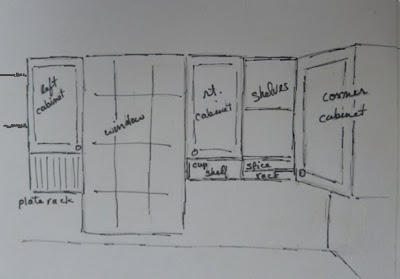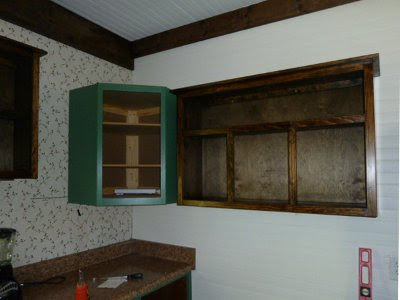My soil test results are back. This is the one I had done on
the back field we are preparing to plant to pasture. Actually it's the second test I had done on that field. The first was done by our
state cooperative extension service last August. I've always had all our soil testing done by the state, until I started reading Neal Kinsey's book,
Hands-On Agronomy: Understanding Soil Fertility & Fertilizer Use. When I learned about his
Agricultural Testing Service, I decided to get a second soil test.
The two test results aren't the same for a couple of reasons. One is that the samples were taken 8 months apart, the second being after we'd
scraped away the saplings and vines that were taking over the field. Much of the topsoil was scraped away as well, so we expected the results to be much worse. In reading Mr. Kinsey's book I've also learned that there are different methods of doing soil tests, and that the results can be measured differently too. Even so, I can't help but compare, especially the recommendations. So for my benefit mostly, but also for anyone else who's interested, here's a look at the two tests.
Soil test from the state cooperative extension service:
 |
| Results (open in its own window to biggify) |
 |
| Recommendations (open in its own window to biggify) |
Soil test from Kinsey Agricultural Services:
 |
| A one page report, open in its own window for a closer look |
Cost
The test from the cooperative extension service was inexpensive. It varies from state to state, but mine one was about $7 for a basic test. There were several pages for which a link was emailed to me. I captured them with the PrtScr button ("print screen" which in Ubuntu brings up "save screenshot"). Also included was access to a free pdf file called "Understanding Your Soil Test Results." This doesn't tell me very much. It give me a basic definition of soil pH, briefly mentions nutrients in a broad sense, and explains what their self-explanatory ratings mean.
The Kinsey Ag Services test was much more expensive, $50 for the basic test, plus I requested an additional test for cobalt, which was another $15. Cobalt is important though, because ruminants need it to synthesize their vitamin B12.
To understand the test, I really need Neal Kinsey's book,
Hands-On Agronomy, Written primarily for the farmer, this book is not what I'd call over my head, but I have no experiential knowledge to follow along without pondering what I'm reading. Still, it's an invaluable resource.
Results
The state test covers soil pH, buffer pH, CEC (cation exchange capacity, which I'll try to explain below), phosphorous, potash (potassium), calcium, and a panel of minerals. It does not tell me how much nitrogen is in the soil, and in fact the "Understanding Your Soil Test Results" tells me that nitrogen testing isn't recommended because soil nitrogen is so elusive. That would be a separate test at an additional cost. Results are given in pounds per acre, along with a colorful bar graph for an "at a glance" idea of basic soil health. "Understanding Your Soil Test Results" also tells me my state has no established levels for copper and sodium, which is a concern because copper deficiency is common in goats and too much or too little can be fatal.
The KAS report tells me my soil sample pH, Total Exchange Capacity (TEC, also explained below), humus content, and target calcium / magnesium percentages. I also get a base saturation of calcium, magnesium, potassium, and sodium. Nutrients and micronutrients are divided into anions (nitrogen, sulfate, & phosphates), cations (calcium, magnesium, potassium, & sodium), and traces (manganese, boron, iron, copper, zinc, & cobalt at my request). For each I'm told the desired value, the value found, and the deficit or surplus.
Recommendations
The state recommendations to correct my soil are specific for what I want to plant, in this case, pasture. Amounts needed are reported in pounds per acre. Recommendations are for the dolomitic limestone I need to adjust pH, and how much chemical fertilizer I need for nitrogen (even though they didn't test for it???), phosphorous, and potassium. No recommendations are made for the minerals.
The Kinsey recommendations are also specific to what I want to plant. These are given as "organics," which I requested. Since I have a half acre field, these are in pounds per acre. However, I could requested these in lbs per 1000 sq. ft, or Kg per hectare. I could have also chosen from several categories of recommendations: excellent, building, maintenance, or minimum input. I held my breath and requested to know what I'd need to bring my soil to excellent condition.
If you look closely at the KAS report, the recommendations are specific. Note that not all deficiencies appear to be addressed (potassium for example), and that for magnesium, I'm given two additives. This is because the Sul-Po-Mag contains sulfur and potassium as well as magnesium. This will address my potassium deficit and part of the magnesium my soil needs. The magnesium sulfate will make up the remaining magnesium deficit. The goal is a balanced soil, and that's what the recommendations give me.
I mentioned why the results won't be the same (note the differences in the percentages of calcium and magnesium), but I'd still like to hit a few highlights here, to compare these two tests.
pH
The first thing I zero in on, is soil pH, and calcium and magnesium levels. The state lab tells me my soil pH is 5.4 with a buffer pH of 7.55. Unfortunately it doesn't explain to me what a buffer pH is. After a little online research, I learn this is a lab value for recommending the amount of lime I need and has no practical use to me.
The Kinsey report gives only the soil pH, which it reports as 6.1. That one's not so bad. Because of what we did to the land I'm not expecting the two reports to be the same, but what was of interest, was the following statements from each service.
"Most secondary and micronutrient deficiencies are easily corrected by keeping the soil at the optimum pH value." State Agricultural Testing Service
"Any nutrient required takes precedence over pH. This means you supply the deficient nutrients first, and when you finish balancing the nutrients, the pH will be right." Neal Kinsey, Hands-On Agronomy.
Do you notice the fundamental philosophical difference here? I know that too high or low a soil pH renders minerals inaccessible. But I also know that they have to be present in the soil in the first place. If they've been used up or washed away, then correcting the soil pH won't help. In that case, I need to add soil minerals as well as correct pH.
CEC or TEC
CEC (state test) is cation exchange capacity, while TEC (Kinsey Ag) is total exchange capacity. Basically these have to do with the chemistry of the soil and indicate how well it can attract, retain, and exchange available nutrients in the soil. It measures the number of "exchange sites" that are available for cations in the soil. According to Neal Kinsey, the CEC is less specific, and varies from lab to lab. Some labs measure all available cations, others measure only some. KAS uses "total" to indicate that they measure all available cations in the soil sample.
Nutrients & Micronutrients
Both tests give me a base saturation percent. This tells me to what percent the exchange sites in my soil are occupied by cations. The results for both this and the exchange capacity are very different on the two reports. Considering the amount of time between the two tests and what we did to the soil, I am not surprised but assume that the most recent test would be more accurate.
Humus Content
I don't get this from the state test, but KAS tells me my humus content is 2.2% Textbook ideal is considered to be 5%. Considering that we
scraped most of our topsoil away, my results are better than I expected.
Conclusions
None really, except that I'm glad I had the KAS test done and will follow it's recommendations. Still, two problems present themselves that are worth mentioning.
The first problem I'm having is in finding natural soil additives rather than chemical fertilizers. I would have thought this would have been fairly easy, considering how many folks prefer organic gardening. The only additives I'm able to find locally are the small, 3 lb packages from Miracle-Gro. That might be okay of I had a 10 by 20 foot garden, but I've got half an acre to address. I did find this website,
Fertrell, which manufactures natural soil amendments in 50 lb bags, but no one nearby carries these, including the recommended Fertrell dealer I found on their website. Direct shipping on the weight I need would knock the cost out of the box!
The second problem, is that I don't think I could afford this testing for my vegetable garden, especially since I'm switched to permanent beds, where my addition of compost, bone meal, and blood meal varies from bed to bed. The results of the test are only as accurate as the soil sample. Mixing all the bed soils would not give me accurate results.
Anybody still reading? Can't blame you if you aren't, LOL. Folks like to get "the dirt" on somebody, but the dirt on dirt? Not quite as interesting I think.





















































